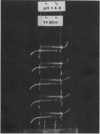Abstract
The role of auxin and protons in the gravitropic response of the sunflower (Helianthus annuus L. cv Sungold) hypocotyl has been investigated. No physiological asymmetry in acid-growth capacity could be detected between the upper and lower surfaces of gravistimulated hypocotyls. These data imply that neutral buffers inhibit shoot gravitropism by preventing the establishment of a lateral proton gradient along gravitropically stimulated hypocotyls. Indirect evidence that auxin is involved in the establishment and/or maintenance of such a gradient derives from the quantitative assessment of the effects of exogenous auxin, anti-auxins, and vanadate on gravicurvature. At low concentrations, exogenous auxin accelerated curvature; at high concentrations, curvature was prevented. Vanadate, an inhibitor of auxin-enhanced H+ secretion, α-(p-chlorophenoxy)isobutyric acid (PCIB), an anti-auxin, and 2,3,5-triiodobenzoic acid (TIBA), an auxin-transport inhibitor, prevented observable asymmetric proton excretion using a brom cresol purple agar technique and also inhibited gravicurvature. Vanadate, PCIB, and TIBA inhibition of gravicurvature could be reversed with acid treatment to the lower surface of a gravistimulated hypocotyl. Auxin treatment to the lower surface of a gravistimulated hypocotyl did not reverse vanadate-induced inhibition, but it did partially reverse PCIB- and TIBA-induced inhibition. These results indicate a close relationship between the acid-growth theory and the differential growth responses of the sunflower hypocotyl during gravitropism.
Full text
PDF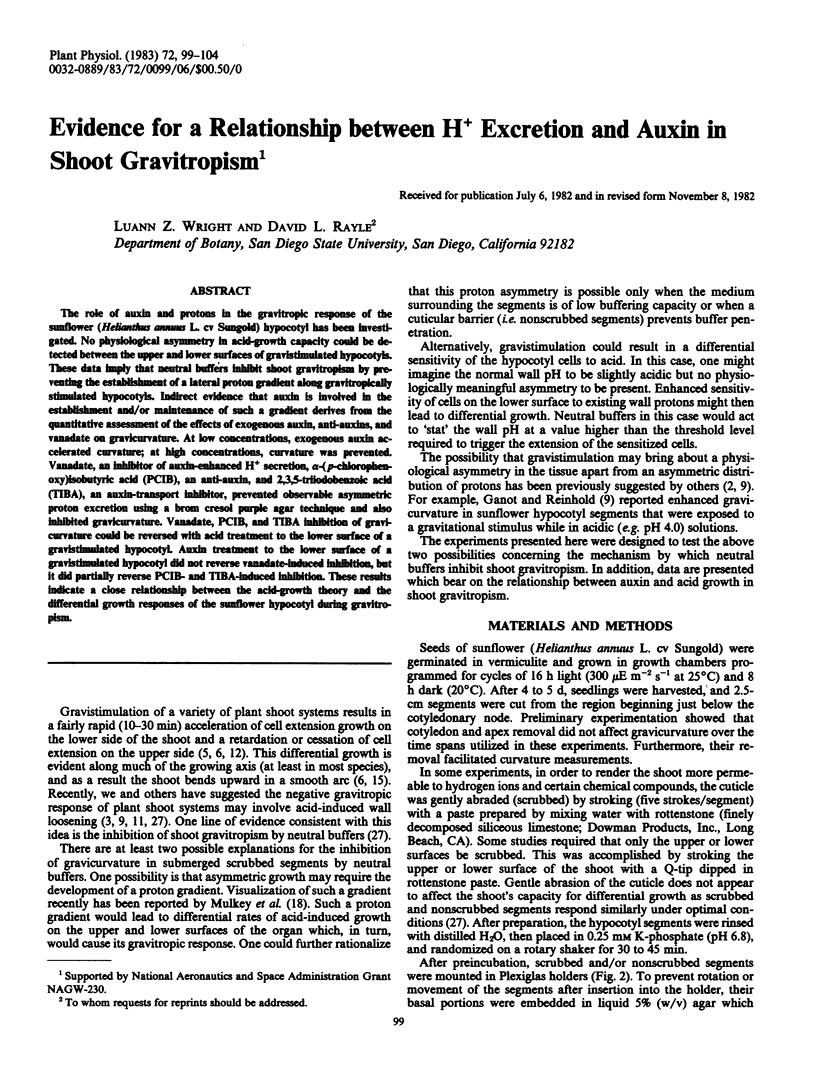
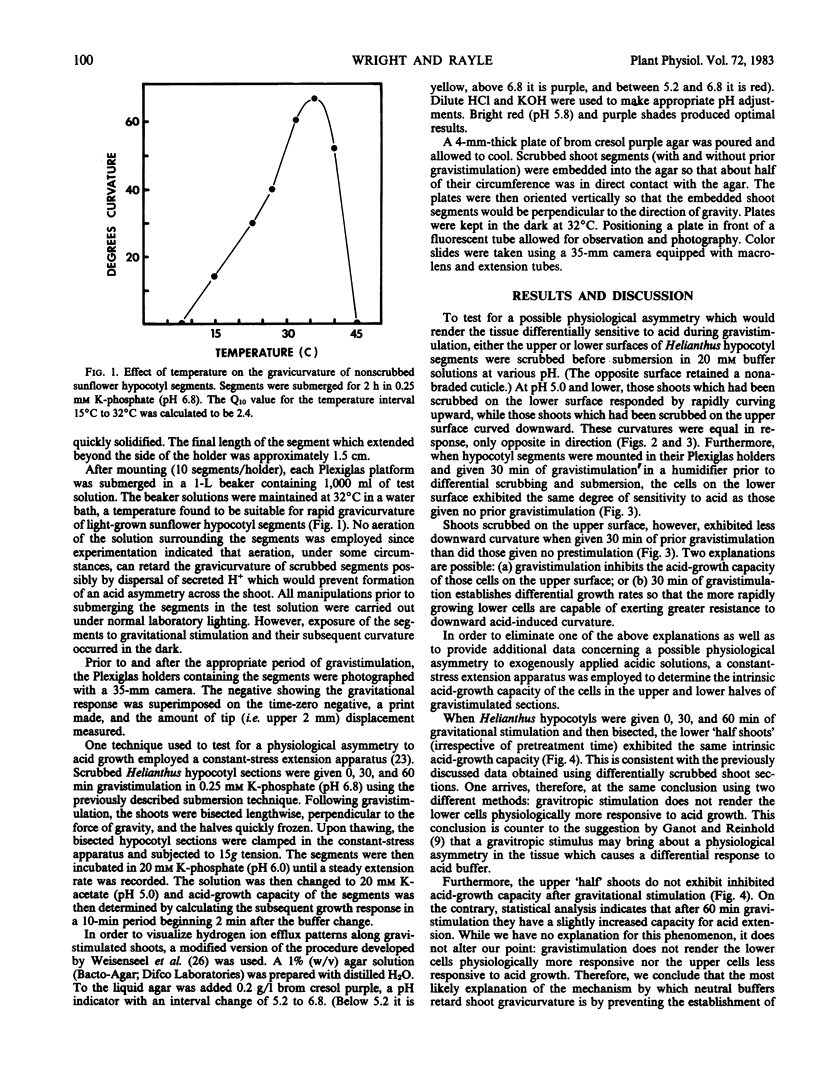


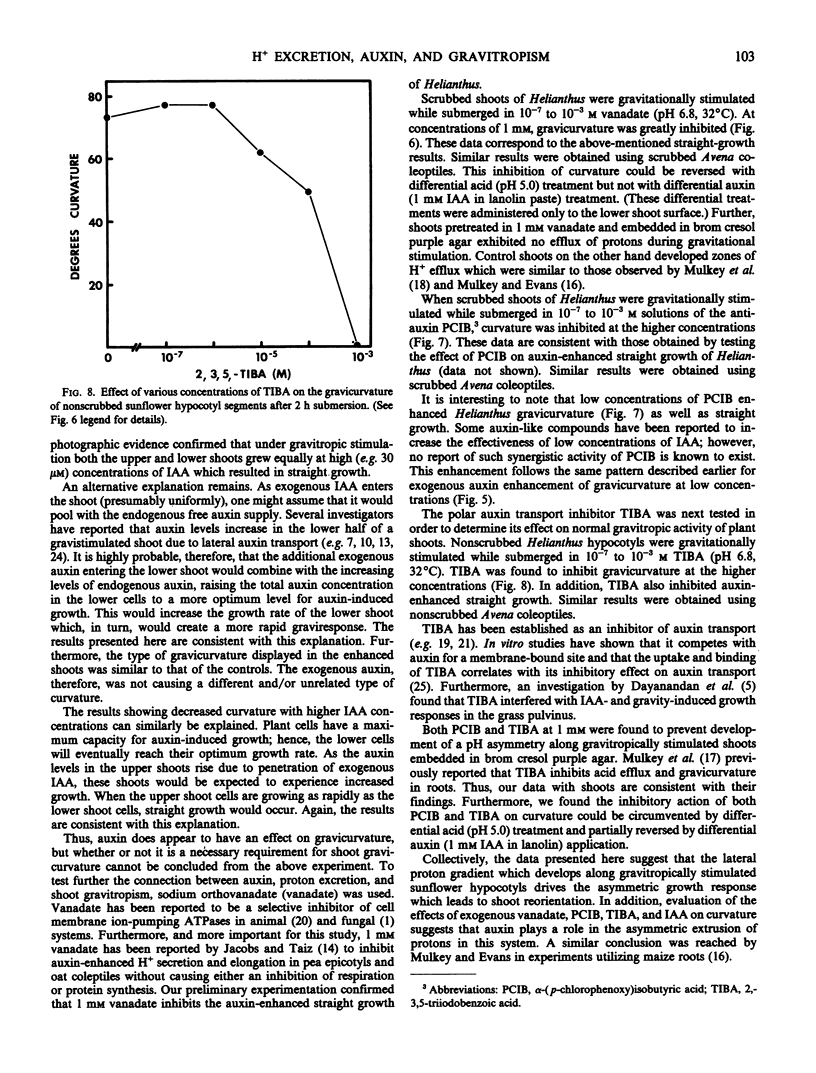
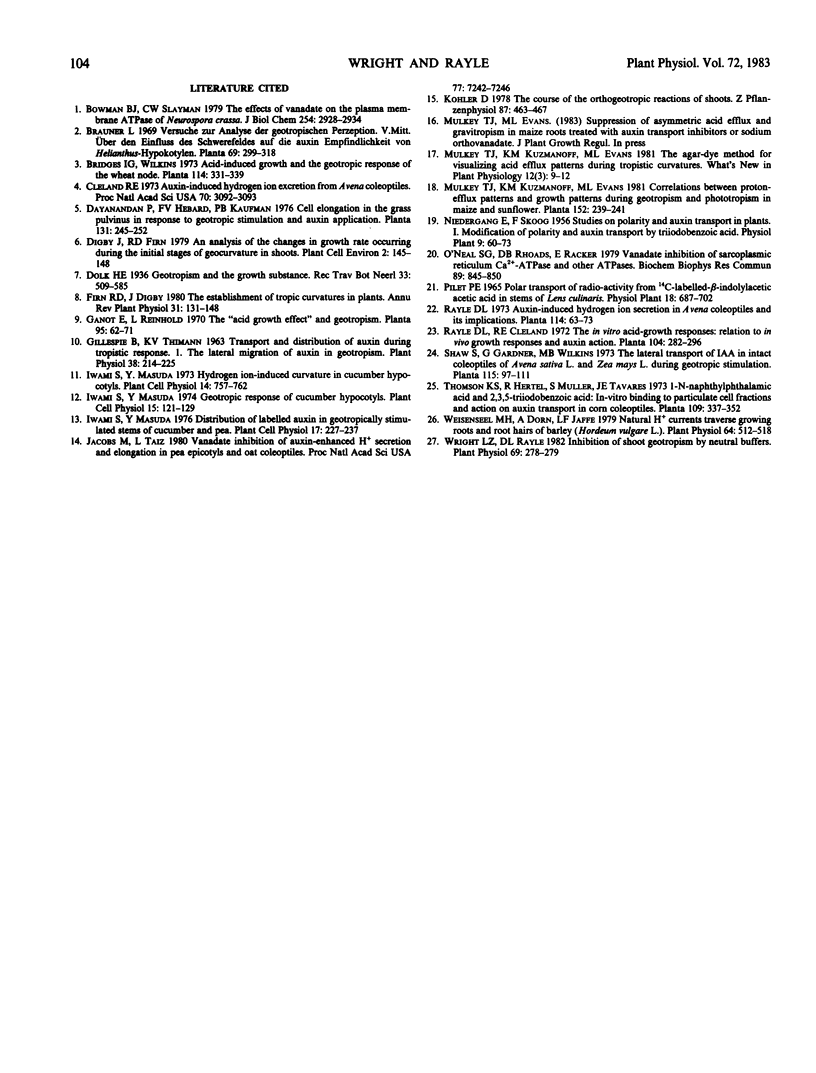
Images in this article
Selected References
These references are in PubMed. This may not be the complete list of references from this article.
- Bowman B. J., Slayman C. W. The effects of vanadate on the plasma membrane ATPase of Neurospora crassa. J Biol Chem. 1979 Apr 25;254(8):2928–2934. [PubMed] [Google Scholar]
- Cleland R. Auxin-induced hydrogen ion excretion from Avena coleoptiles. Proc Natl Acad Sci U S A. 1973 Nov;70(11):3092–3093. doi: 10.1073/pnas.70.11.3092. [DOI] [PMC free article] [PubMed] [Google Scholar]
- Gillespie B., Thimann K. V. Transport & Distribution of Auxin during Tropistic Response. I. The Lateral Migration of Auxin in Geotropism. Plant Physiol. 1963 Mar;38(2):214–225. doi: 10.1104/pp.38.2.214. [DOI] [PMC free article] [PubMed] [Google Scholar]
- Jacobs M., Taiz L. Vanadate inhibition of auxin-enhanced H secretion and elongation in pea epicotyls and oat coleoptiles. Proc Natl Acad Sci U S A. 1980 Dec;77(12):7242–7246. doi: 10.1073/pnas.77.12.7242. [DOI] [PMC free article] [PubMed] [Google Scholar]
- O'Neal S. G., Rhoads D. B., Racker E. Vanadate inhibition of sarcoplasmic reticulum Ca2+-ATPase and other ATPases. Biochem Biophys Res Commun. 1979 Aug 13;89(3):845–850. doi: 10.1016/0006-291x(79)91855-2. [DOI] [PubMed] [Google Scholar]
- Weisenseel M. H., Dorn A., Jaffe L. F. Natural H Currents Traverse Growing Roots and Root Hairs of Barley (Hordeum vulgare L.). Plant Physiol. 1979 Sep;64(3):512–518. doi: 10.1104/pp.64.3.512. [DOI] [PMC free article] [PubMed] [Google Scholar]
- Wright L. Z., Rayle D. L. Inhibition of shoot geotropism by neutral buffers. Plant Physiol. 1982 Jan;69(1):278–279. doi: 10.1104/pp.69.1.278. [DOI] [PMC free article] [PubMed] [Google Scholar]



